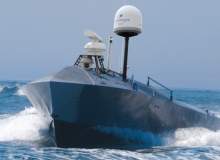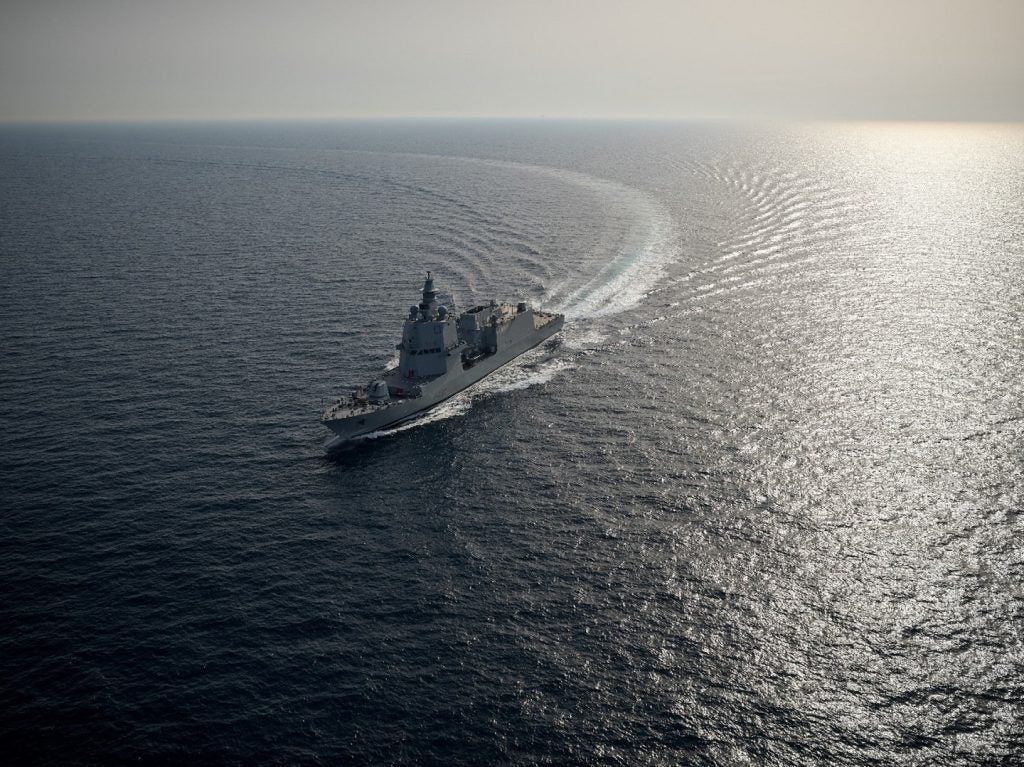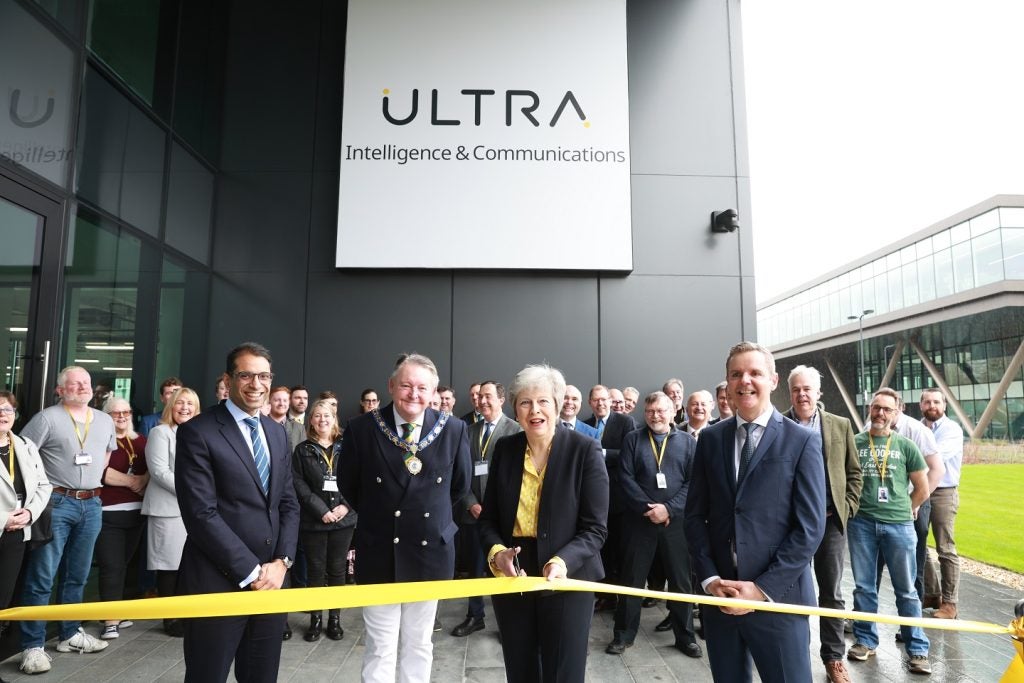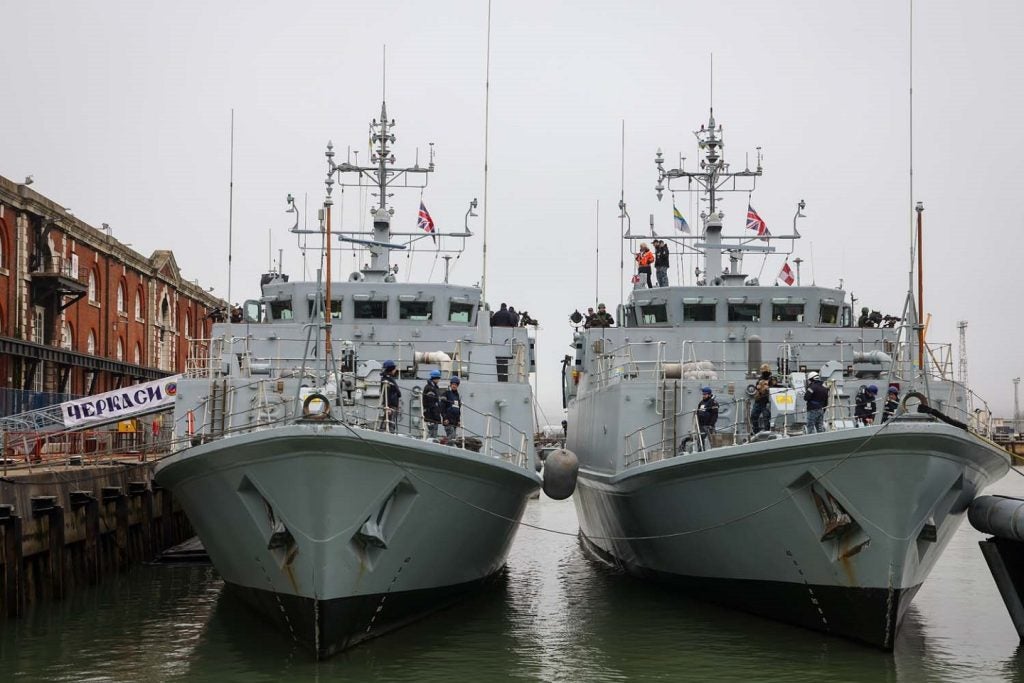

Last December, British engineering group Rolls Royce predicted that in less than ten years cargo ships will operate without human crews. Ships will be able to navigate, cross huge oceans and intelligently avoid hazards, all without a single person on-board.
But despite confident predictions, a world where our shipping lanes are filled with autonomous cargo ships is still a distant dream. Yet in the defence and security field, unmanned vessels are already showing their worth as key assets at sea. Forget ten years for unmanned cargo ships, navies across the world are already operating unmanned boats for a variety of missions.
Primary roles for the new generation of unmanned ships
While unmanned surface vessels (USV) are not new, the need to save money and recent technological advances in autonomy means their uses, and roles, are expanding. Traditionally, they’ve been ideal for roles such as seaborne targets and oceanographic surveying. Like their aerial cousins, USVs offer greater persistence than manned capabilities, they are cheaper and significantly reduce the dangers to human life.
For this reason, unmanned maritime systems (UMS) are increasingly being used to support dangerous missions like surface warfare, mine warfare and anti-submarine warfare – traditionally reserved for manned vessels. The US Navy’s new Littoral Combat Ships will be one of the first vessels in the world to fully integrate this equipment. In the future, LCS’s will be deployed with the 12m-long Fleet-class USV which will be capable of speeds of up to 65km/h and 48 hour persistence.
See Also:
Mine countermeasure (MCM) systems and the autonomous or remote controlled vessels that carry them are evolving rapidly.
How well do you really know your competitors?
Access the most comprehensive Company Profiles on the market, powered by GlobalData. Save hours of research. Gain competitive edge.

Thank you!
Your download email will arrive shortly
Not ready to buy yet? Download a free sample
We are confident about the unique quality of our Company Profiles. However, we want you to make the most beneficial decision for your business, so we offer a free sample that you can download by submitting the below form
By GlobalDataAs with most equipment programmes in the US, USVs are suffering from the effects of budgets cuts with funding for the platforms being cut. That said, the number of USVs in service continue to increase.
"While funding for UMS is falling 45% across the FYDP, future UMS inventories continue to rise. Indeed, as new littoral combat ships arrive in service, support UMS will rise in number," the US Department of Defense’s new Unmanned Systems Roadmap explains.
Across the pond, Portsmouth-based ASV and French manufacturers Thales have teamed up to develop the Halcyon, a new generation of unmanned mine warfare vessel. Thales already has extensive experience in mine detection sonar systems and its equipment is installed on minesweeping vessels across the world. The development of the Thales/ASV vessel represents a move from dedicated mine countermeasure vessels (MCMS), like the Royal Navy’s Hunt class ships, to off-board systems and sensors instead.
"The Unmanned Surface Vehicle will be central to the success of these new concepts of operation in mine warfare; being able to demonstrate and de-risk both the vehicle and its potential payloads is a clear benefit to both our customers and ourselves," head of Thales UK’s naval business Phil Naybour said at the time.
Showcasing the latest unmanned vessel technology
Last month, the UK’s Defence Science and Technology Laboratory (DSTL) – part of the Ministry of Defence – showcased up and coming naval technology at the Royal Navy’s command headquarters in Portsmouth. Senior officials and naval personnel were given the opportunity to see all the latest innovations in maritime science and technology (S&T) under one roof – the first event of its kind in the UK.
"We’ve brought together all the S&T teams, specialists both within DSTL and industry, so that we give the broadest representation of the S&T investment to some of our key stakeholders," said David Sherburn, Maritime Account Manager at DSTL. "More than 60% of our investment in S&T goes to industry and academia and there are some key technologies and techniques that they are developing, and also some key capabilities, in order for us to support the Royal Navy."
One of those key technologies on display at this year’s Maritime Showcase was the USV. Halcyon developers ASV displayed its new Long Endurance Marine Unmanned Surface Vehicle (LEMUSV). ASV won funding for the vehicle’s development in July 2013 as part of the Small Business Research Initiative, a UK government-backed initiative which funds projects designed to solve challenges across the public sector.
The LEMUSV, which began sea trials in December 2013, is a 4.1m long catamaran and weighs around 450kg fully loaded. A key capability of the USV is its ability to operate autonomously and follow a pre-determined course set by a controller.
ASV is working with a number of other companies on the LEMUSV project including Cosworth and Hyperdrive as well as engineers at Cranfield University. Using a ‘three pillar’ energy system consisting of solar power, wind power and a back-up diesel generator, the LEMUSV could remain at sea for nearly 3 months at a time.
"The primary roles [for the LEMUSV] are oceanographic measurements and sensing, but we are also looking at potential roles in anti-submarine warfare," ASV’s Managing Director, Dan Hook, said at the DSTL event.
Challenges for fully integrating unmanned vessels
The challenges for unmanned vessels at sea are similar to those which constrain the full proliferation of unmanned aerial and ground vehicles. USVs will have to operate in challenging environments around crowded harbours, busy shipping lanes and out in the open ocean.
Researchers have developed a giant lifelike robot jellyfish for a US Navy funded project.
On top of this, USVs have to tackle bad weather and be capable of avoiding ships and other hazards – above and below water.
Unmanned systems must adhere to all the policies and regulations set out by the authorities in that particular domain – and USVs are no different. They must operate in accordance with regulations like the International Maritime Organisation’s COLREGs (collision regulations) which define maritime ‘rules of the road’. This requires advanced autonomous technology, especially as some seafarers are known to disregard the COLREGs.
According to the recent US Unmanned Roadmap: "Appropriate autonomy level plays a key role in persistence during clandestine missions, e.g., the ability to sense and avoid hostile forces and to detect and avoid obstacles." But as autonomy increases so too does the technological complexity of the systems and there is also the pressing question of whether autonomous USVs could be armed.
To bypass the autonomy/weaponisation dilemma, USVs can still be remote-controlled. In 2012, US Navy personnel remotely launched six missiles from an unmanned surface vessel precision engagement module (USV PEM) – the maritime equivalent of a Predator drone. The boat, also armed with a 50.cal machine gun, is designed to protect ships from small boat attacks and minimise the danger to sailors.
An era of unmanned aircraft carriers and destroyers?
Whether it’s mine warfare or anti-submarine warfare, USVs continue to be small, agile vessels that support larger manned platforms. And while the technology matures, there are currently no plans for larger unmanned vessels like frigates, or ultimately, aircraft carriers. Though with the greater automation being built into future manned vessels – resulting in significantly reduced crew numbers – it’s not unthinkable that this could be a reality in several decades’ time.
The new Gerald Ford-class aircraft carriers being introduced to the US Navy use nearly 700 less sailors than its predecessors. The Massachusetts Institute of Technology are also working with the US Navy on automated flight deck operations technology called the Deck Operations Course of Action Planner. In the future, this system, working with naval UAS like the X-47B, could further reduce manpower numbers.
If Rolls Royce are thinking about unmanned cargo ships, then surely someone in the Pentagon is also dreaming up unmanned carriers.
It’s an exciting concept, but for the time being small unmanned vessels are the platforms which will be utilised to the greatest effect. They are slowing growing into vital assets in the fight against naval threats like mines, submarines and small boat attacks. But ultimately, their greatest asset is their ability to keep sailors out of harm’s way.
Follow Grant Turnbull on Google+

.gif)




